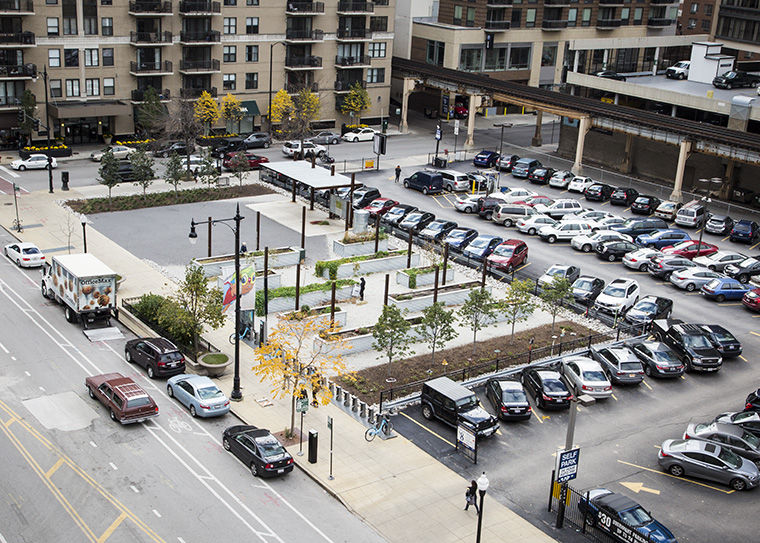College approves planning, development of new student center
College approves planning, development of new student center
November 8, 2015
Development of a new student center that would provide a multipurpose space for students to work, relax and collaborate was approved by the college’s board of trustees on Oct. 28, according to a notice emailed to faculty and staff on Nov. 5.
The announcement, which came from President and CEO Kwang-Wu Kim, said the center is scheduled to be completed by the Fall 2018 Semester. Kim said this space could include food vendors, collaborative study and hang-out spaces and other items like a health and fitness center.
“The sky’s the limit,” Kim said in a Nov. 6 interview with The Chronicle. “What’s important about this building [is] we don’t want it to be a place where the physical spaces predetermine how they’re used. Otherwise, we’re just building an office building. We want a place where the spaces, as much as possible, are multipurpose.”
Dick Kiphart, chairman of the board of trustees, who also participated in the interview, said he is looking forward to providing a center for students, especially commuter students, adding it was important to him that this space will also be available to current first-year students by the time they are seniors.
Kiphart said it is unusual for a college not to have a communal space for students, faculty and staff.
“There was very rapid and unanimous approval of this,” Kiphart said.
The creation of a student center, which was outlined in the college’s Strategic Plan, is something Kim has been asked about since coming to the college in 2013, he said.
“One of the challenges these students face [and] what tends to happen when you’re an undergrad is that you end up spending a lot of time wherever your major is, which means a lot of students clump [together] and they don’t get to see other students,” he said. “The student center is not about majors; it’s not about privileging any area of study. I think we can build a series of spaces that promote not just accidental collaboration, but project-based learning, too. To me, it’s really exciting.”
The college will begin a nine-week planning phase that will include seeking opinions from students, faculty and staff on what they want to be included in the center, according to Kim. During this development and planning, the board is charged with developing a strategy for financing.
An estimate of how much the college will need to spend on the center has not yet been made because plans are still in early development stages, according to college spokeswoman Cara Birch.
Kiphart said because a lot of the college’s financial assets are in real estate, already having the land will help the college as it goes forward with the plans.
“The financial affordability of our real estate situation became much more possible,” Kiphart said. “It’s something we can do and feel comfortable doing right now.”
Kim said there will also be a fundraising component the board will be looking into, which can take off after the development process begins.
The center will be built in the space currently occupied by the Papermaker’s Garden at the corner of 8th Street and Wabash Avenue, which Kim said was originally meant to be developed into a student center.
The new center was envisioned that the college would use the Johnson Publishing Building at 820 S. Michigan Ave.—a Columbia-owned office center from the 1970s—for the project, but Kim said it was determined that it would cost too much to update the building’s mechanical and energy systems.
Kim said the board still needs to decide what the college will do with the Johnson Building.
The center will break ground in the space of the garden, but the garden will be relocated elsewhere on campus, according to Melissa Potter, faculty director for the Center for Book, Paper & Print.
Potter said before construction begins, which is slated for the Fall 2016 Semester, the Papermaker’s Garden will be moved to share space with the Sculpture Garden at the corner of Wabash Avenue and 11th Street. She added the college has allocated funds to help facilitate the move and will be working with Campus Environment to properly retrofit the space.
David Jones, executive director of the Center for Book, Paper & Print, said there will be challenges in using the Sculpture space because plants used for papermaking need more sun, but Potter said the center’s faculty and staff are in negotiations with the college to retrofit the space to make sure their plants grow effectively.
Potter also said the administration discussed the possibility of incorporating the Papermaker’s Garden into the new student center, including a potential rooftop garden or creating space surrounding the center for their plants.
“Columbia is in a time of change, and it is a lot of extra work, but I’m really proud of the fact the school recognizes what the Papermaker’s Garden can do circularly for the students, but also what a garden represents,” Potter said. “That indicates a strong commitment to a pretty healthy overall environment for the students. I think a new student center is supposed to embody those value systems, too.”
Kim said he thinks the student center will improve the overall experience for the college community and added that he is “thrilled” that Kiphart and the board were so receptive to something students have been asking for.
“We still have a lot of work to do to figure out the planning of this,” Kim said. “I want our students and everyone to know how committed the board is to this, which means we are going to find a way.”








